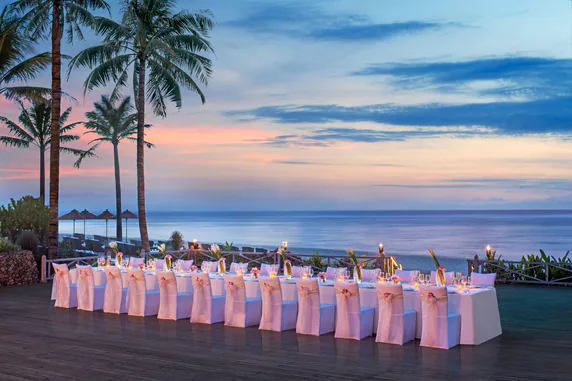
Beyond offsites: Leadership Retreats that Train the Nervous System (not just the agenda)
Why the best leadership retreats now train the nervous system
Executives don’t need another away-day; they need a format that changes how they think under pressure. The most effective leadership retreats now train the nervous system as deliberately as the agenda — blending mindful action, physical reset and focused strategy so that what happens in the room moves the business the week after.
At senior level, mental wellbeing and physical resilience are no longer side conversations — they are preconditions for sustained performance. The nervous system is a leadership instrument; how it recovers, regulates and re-engages determines the quality of every strategic choice.
Two realities drive this shift. First, hybrid and distributed work have thinned the informal ties that power execution; top teams need protected time to rebuild trust and debate trade-offs face to face. Secondly, leaders’ physiological state — attention, arousal, fatigue — is not incidental to decision quality. When attention is depleted, conversations loop. When reactivity spikes, perspective narrows and seniority, not insight, wins the day. The smartest retreats design state first, then strategy: short, deliberate interventions that stabilise attention and down-shift reactivity, interleaved with high-stakes working sessions.
This is not soft theory. Attention Restoration Theory (Stephen Kaplan and others) has long suggested that time in natural settings restores directed attention; contemporary experimental work shows neural markers of executive control improving after relatively brief exposure to nature. In parallel, studies led by Virginia E. Sturm have shown that short, structured “awe walks” can increase positive emotions and reduce distress over time — a practical lever for senior teams between demanding sprints. And as Heidi K. Gardner, Madeline Kneeland and Adam M. Kleinbaum have argued in Harvard Business Review, offsites change real outcomes when they are engineered for interaction and network strength, not when they cram more slides into windowless rooms.
The commercial case is just as clear. Burnout and sustained pressure remain a material risk to productivity and retention in the UK and beyond; boards see the costs in absenteeism, stalled initiatives and regretted attrition. A retreat, properly designed, is not a perk — it is a state-aware operating system for senior decision-making: prime attention, lower reactivity, then convert that state into choices, owners and dates.
What goes wrong with traditional offsites
Too many away-days are content-heavy and body-ignorant. Deck after deck in rooms and routines that ignore how cognition fatigues and how groups polarise when arousal is high. The result is familiar: circular discussions, cautious compromises and promises that unravel once everyone is back at their inbox.
The alternative begins with a humane observation: energy, attention and courage are trainable — and designable. Treat them as variables, not hopes.
The operating rhythm: mindful action, physical reset, lasting focus
Mindful action replaces ice-breakers. Brief, guided movement or breath-led primers (inclusive and graded) sharpen interoception and give leaders practical levers to modulate stress in the moment. The room settles; attention comes online.
Physical reset is built in, not bolted on. Ten- to twenty-minute windows of nature immersion, awe protocols or quiet breathwork punctuate cognitive load every ninety to one hundred and twenty minutes. Pathways, terraces, gardens and shoreline loops become part of the working toolkit.
Lasting focus is engineered. Strategy work runs in tight blocks framed by a single question, phones away, slides minimal. Each block ends with a decision register — the choice, the owner, the first action and the date. What was spoken becomes what is done.
This is not a wellness add-on; it is applied wellbeing — the integration of physical reset, emotional regulation and cognitive clarity that builds mental strength and sustainable resilience. It travels back to the working week as a leadership habit, not a weekend indulgence.
Built, not bought: a consulting-first approach
Every effective executive retreat starts with a question, not a venue. That’s why The DMC Collective leads with a light-touch diagnostic run by its in-house specialists Anne-Marie Flammersfeld and Cassandra Mack. They are the visible architects from scoping to debrief — designing the programme around your outcomes and then leading it end-to-end.
- Anne-Marie Flammersfeld — performance under pressure.
With sports science and ultra-endurance credentials, Anne-Marie designs inclusive, graded challenge and movement primers that sharpen attention and confidence without marginalising mixed fitness levels. Her programmes cultivate mental toughness and embodied calm, combining evidence-based endurance techniques with reflective recovery practices that leaders can sustain back at work. - Cassandra Mack — leadership psychology and culture.
Cassandra specialises in decision clarity, roles-and-risks theatre and conflict-to-constructive routines. Where Anne-Marie primes the physiological state, Cassandra converts that state into clear choices, owner maps and disciplined follow-through.
The diagnostic: brief leadership interviews; a pulse on attention, fatigue and team norms; a scan for cross-silo friction; and an Outcomes Canvas naming the few behavioural and decision shifts that would make the next quarter meaningfully different. The agenda is then built around those outcomes — and only afterwards is place proposed to serve the work.
These retreats are not escapes; they are controlled environments for nervous system training and leadership renewal. When cognitive load, emotional steadiness and physical vitality align, leaders make braver, clearer and more humane decisions. That’s the deeper wellness outcome — resilience as strategic capacity.
Place as a performance tool
Locations aren’t backdrops; they’re instruments. The point isn’t escape — it’s deliberate context switching that your nervous system recognises as restorative and your agenda exploits for clarity.
- Su Gologone, Sardinia — morning light and horizon lines for movement primers; artisan studios for hands-on co-creation before debate; a serious events hub for synthesis.
- Villa Muggia, Lake Maggiore — salons that make sensitive conversations honest, gardens for tone resets, and a pavilion for final commitments.
- Bachmair Weissach, Lake Tegernsee — alpine paths at dawn, lakeside recovery, and robust events infrastructure within easy reach of Munich.
- The Harbour, Ameland (Wadden Sea) — UNESCO seascape horizons that widen perspective before narrative work indoors.
- Meneghetti, Istria — vineyard pacing and villa clusters that host parallel tracks before dusk reconvening.
- Kjerringøy Fishing Lodge, Bodø — seclusion, sauna and sea-to-mountain horizons; ideal for post-merger repair and delicate strategy.
- Westin Nirup Island (near Singapore) — board-level privacy within easy APAC reach, pairing formal rooms with forest bathing and shoreline synthesis.
Design maxim: place follows the work. The venue is selected to serve your Outcomes Canvas.
Designing by question: how great retreats begin
Templates are tidy; businesses aren’t. The most effective corporate leadership retreats don’t start with a venue or an agenda — they start with better questions. These are the diagnostics that turn a gathering into a catalyst for clarity, cohesion and wellbeing.
Strategy and timing
- Which two or three decisions are truly stuck — and what would be possible if they were unblocked within sixty days?
- Is our constraint ideas, alignment or courage?
- What conversations are quietly missing from our calendar?
Decision architecture
- For each decision, do we have a clear owner, options and criteria — or are we still trading stories?
- Where does analysis end and judgement begin?
- When we decide, what will be the first visible action — and who will take it?
Team dynamics and trust
- Which conversation do we avoid because it’s risky — and what value sits behind it?
- Which relationships are the connective tissue of this business, and are they healthy?
- When we disagree, do we polarise or productively contest?
Attention, energy and pace
- When does this team lose attention — and what does that pattern reveal?
- What helps us down-shift reactivity without losing urgency?
- How much white space do ideas need before they land?
Place as a tool
- Which contexts — a lakeside path, a studio, a salon, a terrace — make the work most honest?
- Do we need privacy, stimulus, or both?
Inclusion and intensity
- Who might be silenced by the format (rank, style, mobility, neurodiversity)?
- How will we calibrate intensity so everyone can stay in the room — physically and psychologically?
Ethics and transfer
- What would count as harm — to people, culture or reputation — and how will we design against it?
- Which behaviours will tell us the retreat worked — thirty, sixty, ninety days later?
- What will we stop doing if we’re serious about those choices?
At The DMC Collective, these questions are where design begins. Anne-Marie Flammersfeld and Cassandra Mack use your answers as the raw material for a diagnostic that builds a retreat around your leaders’ state, wellbeing and strategy — not just their schedule.
What to measure (and why it matters)
Measurement follows intent. Agree the scorecard after the questions above, not before — and make sure it satisfies your CFO and your CHRO alike. This isn’t about proving that time away was “worth it”; it’s about tracing how clarity, focus and resilience show up in measurable ways once the team is back at work.
- Decision velocity — days from discussion to owner to first action.
- Cross-functional tie strength — a simple pre/post pulse on “who goes to whom for what.”
- Execution rate — percentage of retreat commitments actioned at thirty, sixty and ninety days.
- Attention quality — a two-minute pre/post index around recovery blocks.
- Wellbeing pulse — self-reported measures of stress, focus and fatigue.
- Lagging indicators — trends in absenteeism, regretted attrition and team cohesion.
Two ten-minute virtual clinics after the event — one at thirty days to remove blockers, one at sixty to capture lessons — keep the cadence honest without bureaucracy.
Safety, inclusion and dignity by design
- Intensity tiers: graded movement with chair-based or low-impact options; an optional higher-challenge stream; no stigma for opting out.
- Psychological safety: no surprises; informed choice; clear briefings before any outdoor element.
- Medical boundaries: no clinical claims; somatic work framed as performance and focus, not treatment.
- Cultural nuance: facilitation tailored to direct and indirect communication styles; decision registers avoid public shaming.
- Accessibility: paths, timings and layouts checked for mobility needs; recovery windows kept close to working rooms.
A humane invitation
If this model fits what your organisation needs next quarter, there are two low-friction ways to explore fit with The DMC Collective:
- A fifteen-minute expert diagnostic with Anne-Marie Flammersfeld and Cassandra Mack — bring the three questions that matter most.
- A virtual site fit — we’ll show two venues that best serve your Outcomes Canvas and the design we’d run there.
No templates. No theatrics. Just a retreat built around the outcomes you choose — and led end-to-end by the people who helped you define them.
If you’re ready to explore how a leadership retreat could transform your executive team’s focus, energy and cohesion, reach out directly to The DMC Collective team:
📩 info@thedmccollective.com
We’ll help you design a bespoke experience that builds clarity, resilience and renewal — for leaders, and the business they lead.

Related Articles

Nirup Island: Indonesia’s Exclusive Destination for Luxury Corporate Events
Nirup Island, nestled within Indonesia’s serene Riau Archipelago, stands out as a sophisticated choice for intimate luxury events, including board meetings, incentives, and exclusive partner seminars tailored for multinational audiences.

Why is Bali a Leading Destination for Corporate Event Spaces, and What Has Made Its Resorts Renowned Worldwide?
Discover why Bali is a top choice for corporate events, with world-class resorts and stunning venues that attract businesses from around the globe.

Corporate Incentive Travel Services in Bali: Why Bali Remains a Top Choice for Incentive Travel Planners
This article explores why Bali remains a top choice for incentive travel planners and highlights some of Indonesia’s hidden gems that deserve a spot on the radar of forward-thinking planners.
